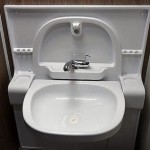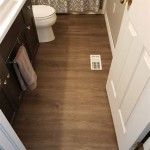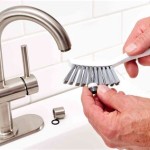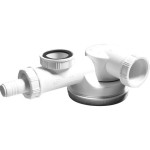```html
36 Inch Sink Bathroom Vanity: A Practical and Stylish Choice
The 36 inch sink bathroom vanity is a frequently selected size for residential bathrooms, striking a balance between space efficiency and functional utility. This size is particularly well-suited for master bathrooms, guest bathrooms, and even larger powder rooms where ample storage and countertop space are desired without overwhelming the available area. Understanding the nuances of this versatile fixture can aid homeowners and designers in making informed purchasing decisions.
When selecting a 36 inch sink bathroom vanity, consider the overall dimensions of the bathroom and the existing layout. Factor in door swing clearances, walking paths, and the proximity to other fixtures such as toilets and showers. A 36 inch vanity, while compact, still requires adequate surrounding space to ensure comfortable and unobstructed movement.
The availability of various styles and configurations within the 36 inch vanity category is extensive. These options cater to diverse aesthetic preferences, ranging from traditional and transitional to modern and contemporary designs. The choice of material, finish, and hardware should complement the overall bathroom décor and contribute to a cohesive and visually appealing space.
Maximizing Space and Storage
One of the primary advantages of a 36 inch sink bathroom vanity is its ability to provide significant storage capacity without consuming excessive floor space. This makes it an ideal choice for bathrooms where space is at a premium.
The internal configuration of the vanity plays a crucial role in optimizing storage. Common configurations include a combination of drawers and cabinets. Drawers are typically used for storing smaller items such as toiletries, makeup, and personal care products, while cabinets can accommodate larger items such as cleaning supplies, towels, and spare toiletries. The depth and width of the drawers and cabinets should be carefully considered based on the intended storage needs.
Some 36 inch vanities incorporate additional storage features such as open shelving or pull-out organizers. Open shelving can be used to display decorative items or frequently used items, while pull-out organizers can maximize the usable space within cabinets and improve accessibility to stored items. The presence of a false drawer front beneath the sink is also relevant. While it might not provide storage, a tilt-out drawer beneath the sink can house smaller items, maximizing storage potential.
The choice between a single-door cabinet and a double-door cabinet is another factor to consider. A double-door cabinet offers wider access to the storage space beneath the sink, while a single-door cabinet may be preferable in tighter spaces where door swing clearance is limited.
Consider the integration of electrical outlets and USB ports into the vanity. These features can provide convenient charging stations for electronic devices such as electric toothbrushes, razors, and smartphones, eliminating the need for unsightly cords and clutter on the countertop.
Material Selection and Durability
The material used in the construction of a 36 inch sink bathroom vanity significantly impacts its durability, aesthetics, and overall value. Common materials include solid wood, plywood, MDF (medium-density fiberboard), and particleboard.
Solid wood is often considered the most durable and aesthetically pleasing option, offering natural beauty and resistance to moisture. However, solid wood vanities tend to be more expensive than those made from other materials. Proper sealing and finishing are crucial to protect solid wood from water damage and warping.
Plywood is a durable and cost-effective alternative to solid wood. It consists of multiple layers of wood veneer bonded together, providing strength and stability. Plywood is less susceptible to warping and cracking than solid wood and is a good choice for bathrooms with high humidity levels.
MDF is a manufactured wood product made from wood fibers and resin. It is a smooth and stable material that accepts paint and finishes well. MDF is less expensive than solid wood and plywood but is more susceptible to water damage. It is important to ensure that MDF vanities are properly sealed and finished to prevent moisture absorption.
Particleboard is the least expensive option for vanity construction. It is made from wood particles and resin and is less durable and moisture-resistant than solid wood, plywood, and MDF. Particleboard vanities are typically covered with a laminate or veneer to improve their appearance and protect them from moisture.
The countertop material also plays a crucial role in the durability and aesthetics of the vanity. Common countertop materials include granite, marble, quartz, solid surface, and laminate. Granite and quartz are durable and stain-resistant options, while marble offers a luxurious appearance but requires more maintenance. Solid surface countertops are seamless and non-porous, making them easy to clean and maintain. Laminate countertops are the most affordable option but are less durable than other materials.
Consider the finish of the vanity. Painted finishes can provide a clean and modern look, while stained finishes highlight the natural grain of the wood. The finish should be durable and resistant to moisture and scratches.
Sink Style and Functionality
The style of the sink that is integrated into the 36 inch vanity is integral to both the aesthetic and functional aspects of the bathroom. Consider the various sink styles available, including undermount, vessel, drop-in, and integrated sinks. Each style offers unique benefits and drawbacks.
Undermount sinks are installed beneath the countertop, creating a seamless and easy-to-clean surface. They offer a modern and minimalist look and are a popular choice for contemporary bathrooms. Undermount sinks require a solid surface countertop material such as granite, quartz, or solid surface.
Vessel sinks sit on top of the countertop, creating a dramatic and eye-catching focal point. They are available in a wide variety of shapes, sizes, and materials, allowing for creative design options. Vessel sinks require a taller vanity to accommodate the height of the sink.
Drop-in sinks, also known as self-rimming sinks, are installed into a pre-cut hole in the countertop. They are easy to install and are a cost-effective option. Drop-in sinks have a visible rim that sits on top of the countertop.
Integrated sinks are made from the same material as the countertop, creating a seamless and hygienic surface. They are easy to clean and maintain and offer a modern and minimalist look. Integrated sinks are typically made from solid surface materials.
The number of faucet holes in the sink is another factor to consider. The number of faucet holes should match the number of handles on the faucet. Common faucet configurations include single-hole, center-set, and widespread. Single-hole faucets require only one hole in the sink, while center-set faucets require three holes. Widespread faucets require three holes that are spaced farther apart.
The depth and width of the sink basin should also be considered. A deeper sink basin will prevent splashing, while a wider sink basin will provide more space for washing. The size of the sink basin should be proportionate to the size of the vanity and the overall bathroom design.
The placement of the sink within the vanity can also affect functionality. A centered sink is a common choice, but an offset sink can provide more countertop space on one side of the vanity. Consider the user's dominant hand when deciding on the sink placement.
Incorporating a pop-up drain assembly allows for easy opening and closing of the drain, eliminating the need to manually pull the drain plug. This feature can enhance the convenience and hygiene of the sink.
Evaluate the overflow drain. This component prevents the sink from overflowing if the drain is accidentally blocked. While not strictly necessary, it is a helpful safeguard against accidental water damage.
Ultimately, the selection of a 36 inch sink bathroom vanity involves a careful assessment of space constraints, storage needs, aesthetic preferences, material durability, and sink functionality. A well-chosen vanity can enhance the beauty and functionality of the bathroom, creating a comfortable and inviting space.
```
Home Decorators Collection Moorside 36 In W X 19 D 34 H Single Sink Bath Vanity Sweet Maple With White Engineered Stone Top 36sm The Depot

Home Decorators Collection Clinton 36 In W X 22 D 34 H Single Sink Bath Vanity Almond Latte With Carrara Marble Top 9785000810 The Depot

Home Decorators Collection Doveton 36 In W X 19 D 34 H Single Sink Bath Vanity Weathered Tan With White Engineered Marble Top 36wt The Depot

Eviva London 36 In White Undermount Single Sink Bathroom Vanity With Marble Top The Vanities Tops Department At Com

Dhp Otum 36 Inch Bathroom Vanity With Sink White Wood Com

Home Decorators Collection Bellington 36 In W X 22 D 34 H Single Sink Bath Vanity Almond Toffee With White Engineered Stone Top The Depot

Dhp Maine 36 Inch Bathroom Vanity With Carrera Countertop And Rectangular Ceramic Sink Gray Silver Com

Allen Roth Harwood 36 In Natural Undermount Single Sink Bathroom Vanity With White And Gray Quartz Top The Vanities Tops Department At Com

36 Contemporary Bathroom Vanity With Top Sink 2 Soft Close Doors And 6 Drawers Brown Modernluxe Target

Cora 36 Inch Blue Wood Single Bathroom Sink Vanity Vtb
Related Posts







